BATHROOM FITTINGS GLOSSARY
Many people have difficulty in understanding the technical terms associated with Bathroom Fittings. Here, I have explained the meanings of these terms in a simple easy-to-understand language.
2-hole – 2-hole faucets consist of a single-hole faucet, paired with an accessory such as a sidespray.
3-hole – 3-hole faucets consist of two separate handles and a spout or a single-handle faucet with an escutcheon plate to stylishly cover the vacant faucet holes.
4-hole – 4-hole faucets are made up of a 3-hole faucet with an added accessory such as a sidespray.
Aerator – Device for oxygenating water, filling the water flow with air bubbles. On kitchen faucets, it enables a faucet to provide different flows of water, from stream to spray.
Apron-front – Apron-front sinks are designed with a stylish panel of color in front and are available in both tile-in and undercounter models.
Back-to-wall toilet – The cistern is concealed behind a wall or inside bathroom furniture.
 Ball Passage – Refers to the size of a ball which can pass through the trapway of a toilet. Standards are established based on minimum size ball passage. Ball passage also relates to trapway size. Generally speaking, the size of the trap will be 1/8″ larger than the maximum size ball which can pass through it.
Ball Passage – Refers to the size of a ball which can pass through the trapway of a toilet. Standards are established based on minimum size ball passage. Ball passage also relates to trapway size. Generally speaking, the size of the trap will be 1/8″ larger than the maximum size ball which can pass through it.
Ballcock – The mechanism that controls the flow of water into a gravity-operated toilet tank. The ballcock is controlled by the float mechanism floating in the water in the tank. When the toilet is flushed, the float drops and opens the ballcock, allowing water to enter the tank and/or bowl. The float rises as the water level in the tank is restored, and shuts off the ballcock when the tank is completely filled. Also referred to as a float valve.
Bidet – A personal hygiene fixture with hot and cold water supply for genital and perineal cleanliness.
Bisque – Unglazed areas of vitreous china fixtures, such as inside the tank or on the bottom of the bowl foot, have a bisque finish.
Bowl – Water-containing receptor which receives liquid and solid body waste; two general bowl classifications are round front and elongated.
Built-in (shower valve) – The supply pipes are concealed behind the wall, with only the valve control visible.
Cast Iron sinks provide uncompromising strength with an ultra-thick, glossy layer of enamel, that helps resist staining, scratching and chipping.
 Centre tap deck bath – The bath has a ledge on one side for the taps, making it more comfortable for two people to bathe.
Centre tap deck bath – The bath has a ledge on one side for the taps, making it more comfortable for two people to bathe.
Ceramic discs / cartridges – Taps which can be turned on or off with just a quarter turn. Ceramic discs inside the tap allow extreme control-ability of water flow rate.
xxx
Close-Coupled – Describes a toilet with a separate tank and bowl, secured to each other, and with a separate tank cover. Also referred to as a two-piece toilet.
Cycle Time – The time beginning at the instant a toilet flush lever is actuated, until the instant the water supply shuts off, completing the flush cycle.
Dam – The barrier built into the trapway of a toilet that controls the water level in the toilet bowl.
Deck mount tap – Sit on the rim of a faucet or bath (as opposed to being wall mounted).
Dual flush – The cistern offers the option of a water saving by having a half -volume or full-volume flush.

Elongated Bowl – Toilet bowl having dimensions of 14″ wide by 18 1/2″ long (from center of seat hinge holes to front outside rim edge).
Enamel – Powder coating, usually a combination of clay, quartz, feldspar, silica and color pigments, applied to an iron casting. When fired at high temperatures the coating melts and fuses to the casting, creating a glass-like surface.
Escutcheon – Any decorative threaded flange below or behind a faucet handle. Also an ornamental plate used at the base of a faucet to cover additional holes on a lavatory or kitchen sink.
Fire Clay – Fireclay sinks are made from a clay base that is fired at an intense heat to vitrify the clay and fuse the glaze. The result is a durable sink with a nonporous glossy finish.
Flapper – Also known as flush ball, the flapper is the moving part of the flush valve that seals the water into the tank or allows water to exit the tank for the flush cycle. This is the predominant replacement part used on conventional toilets.
Float Ball – The floating ball connected to the ballcock inside the tank, which rises or falls with changing water levels in the tank, and actuates or shuts off the ballcock as needed.
Flush Valve – The valve located at the bottom of a gravity-operated toilet flush tank, which opens when the trip lever is actuated, and closes when the tank has drained to the desired level. Usually contains an overflow tube as well.
Flushing Surface – The interior surface of the bowl, and all other surfaces which may come into contact with water during flushing.
Freestanding / island – The bath is fitted away from the wall, or even in the middle of the room. The water supply and waste may need to run through the floor.
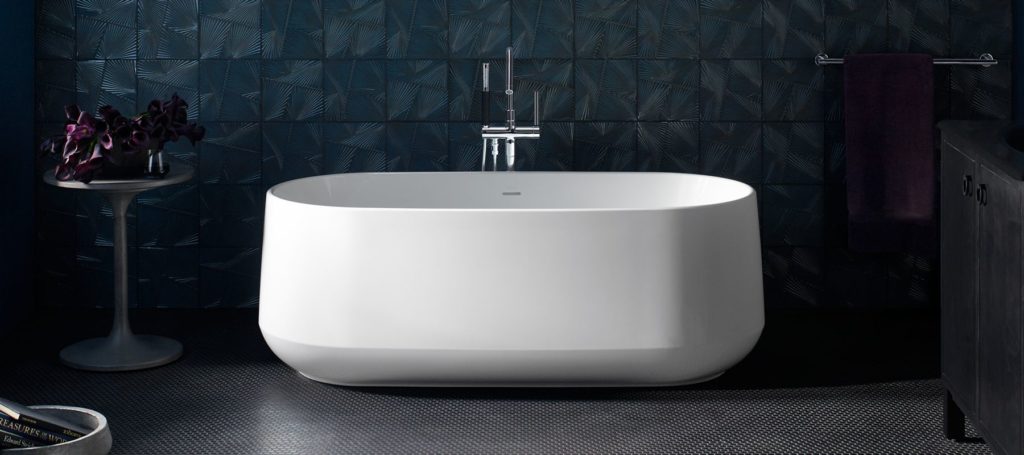
Glaze – Glossy, water-resistant, colored finish surface on vitreous china plumbing fixtures.
GPF – Abbreviation for “gallons per flush”, used in discussing water consumption for toilets.
Gravity Operated Toilet – A toilet which relies on the natural downward pressure (or “head”) of water in a toilet tank to flush the toilet effectively.
Jet – An orifice or other feature of a toilet that is designed to direct water into the trapway quickly, to start the siphon action.
Laminar – Wall or ceiling mounted water flow, controlled by remote tap handles.
Low Consumption Toilet – A classification of toilet designed to flush using 1.6 or less gallons (6 Litres) of water , as opposed to 3.5 gallon (13 Litres) “Water-Saving” toilets, and other higher-consumption toilets.
Monobloc mixer – A one-piece fitting with two handles. Hot and cold water are mixed and delivered through a single spout.
One-handle – One-handle faucets provide on/off activation and temperature setting with a single operation.
One-Piece Toilet – A toilet in which the tank and bowl are manufactured as a single vitreous china fixture. Typically, one-piece toilets have a lower profile than two-piece toilets.
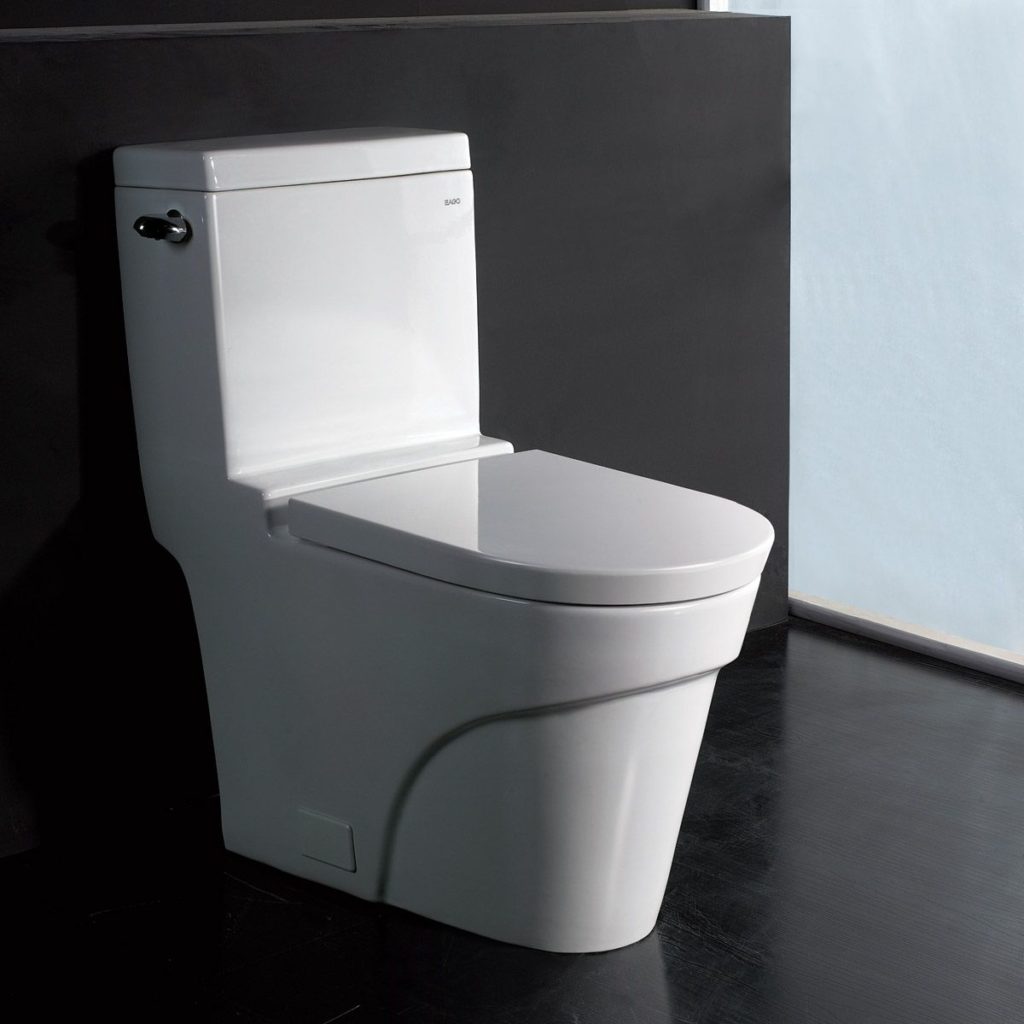
Overflow Tube – The vertical tube inside a toilet tank (usually part of the flush valve), which directs water into the bowl in case the ballcock malfunctions. If the ballcock does not shut off properly, water will drain through the overflow tube into the bowl, and flow harmlessly over the dam and out the drain. This prevents potential water damage caused by the tank overflowing, and indicates to the user that there is a problem by a “constant running” condition. On most toilets, the overflow tube also has a refill tube flowing into it. The refill line directs water from the ballcock through the overflow tube, to the bowl, after the siphon break.
Pedestals and semi-pedestals – A pedestal stands on the floor and supports the weight of the wash basin. A wash basin with a semi-pedestal is wall mounted and the semi-pedestal conceals the pipework.
Priming Jet – Opening in bowl through which tank-supplied water flows, designed to propel waste up into the trapway.
Quarter turn taps – Taps which can be turned fully on by turning the handle through 90 degrees.
Refill Tube – On most toilets, a refill tube directs water from the ballcock into the overflow tube to refill the bowl after the siphon break.
Reverse-Trap Water Closet – A water closet having a siphonic trapway at the rear of the bowl, and integral flushing rim and jet. Minimum dimensions are 9″ x 8″ water spot, and 1 1/2″ ball pass.
Rim Holes – A series of small holes, in the underside of a toilet rim, around the circumference of the bowl. Incoming water flows down into the bowl through these holes, creating a rinse effect, or “rim wash” over the entire inner surface of the bowl.
Rough-In Dimensions – The distance from a finished wall or floor to the center of the waste or supply opening or mounting holes on a plumbing fixture.
Round Front Bowl – Toilet bowl having dimensions of 14″ wide by 16 1/2″ long (from center of seat hinge holes to front outside rim edge).
Self Rimming – Self-rimming sinks provide easy drop-in installation, mounting directly onto the countertop.
Semi-recessed lavatory – A fitted basin which is partly inset into a piece of bathroom furniture with the front of the basin protruding. May be more comfortable to use than a fully inset vanity basin.
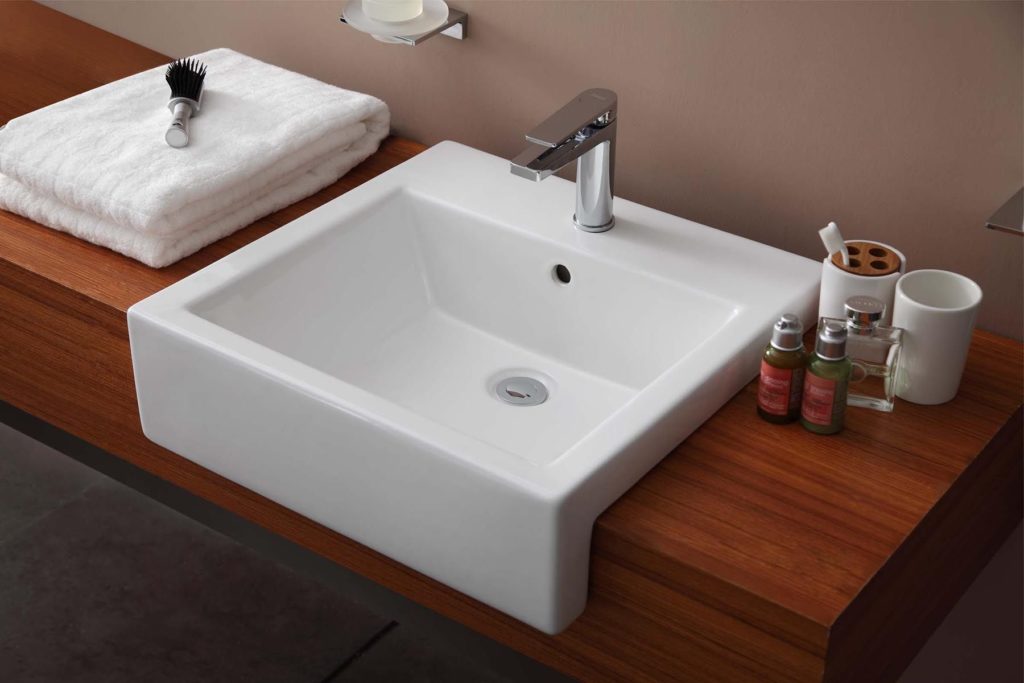
Single-hole – One hole drilling positioned in the center of a sink or lavatory faucet ledge providing for installation of a single-control faucet.
Siphon Break – The point in a toilet flush when air is re-introduced into the trapway, “breaking” the siphonic action. The siphon break is usually heard as a deep gurgling at the conclusion of a flush.
Siphon Wash Closet – A water closet having a trapway at the rear of the bowl and integral flushing rim. Minimum dimensions are 5″ x 4″ water spot, and 1 1/2″ ball pass.
Siphoning – The suction or pulling effect that takes place in the trapway of a toilet as it is filled with outgoing water and waste. An effective siphon is critical to an effective flush for any toilet.
Siphon-Jet Water Closet – A water closet having a siphonic trapway at the rear of the bowl, and integral flushing rim and jet.
Siphon-Vortex Water Closet – A water closet having a trapway at the rear of the bowl, integral flushing rim and a water supply system with or without a jet, which does not feed directly into the trap.
Supply Stop – The valve providing on/off toilet water supply control.
Tank – The fixture reservoir for flush water. On a conventional toilet, the ballcock, flush valve and trip lever are installed in the tank. A tank lid closes the top tank opening.
Three-handle – Three-handle faucets also use separate handles for hot and cold water, but have an additional handle to divert the water from bath spout to showerhead.
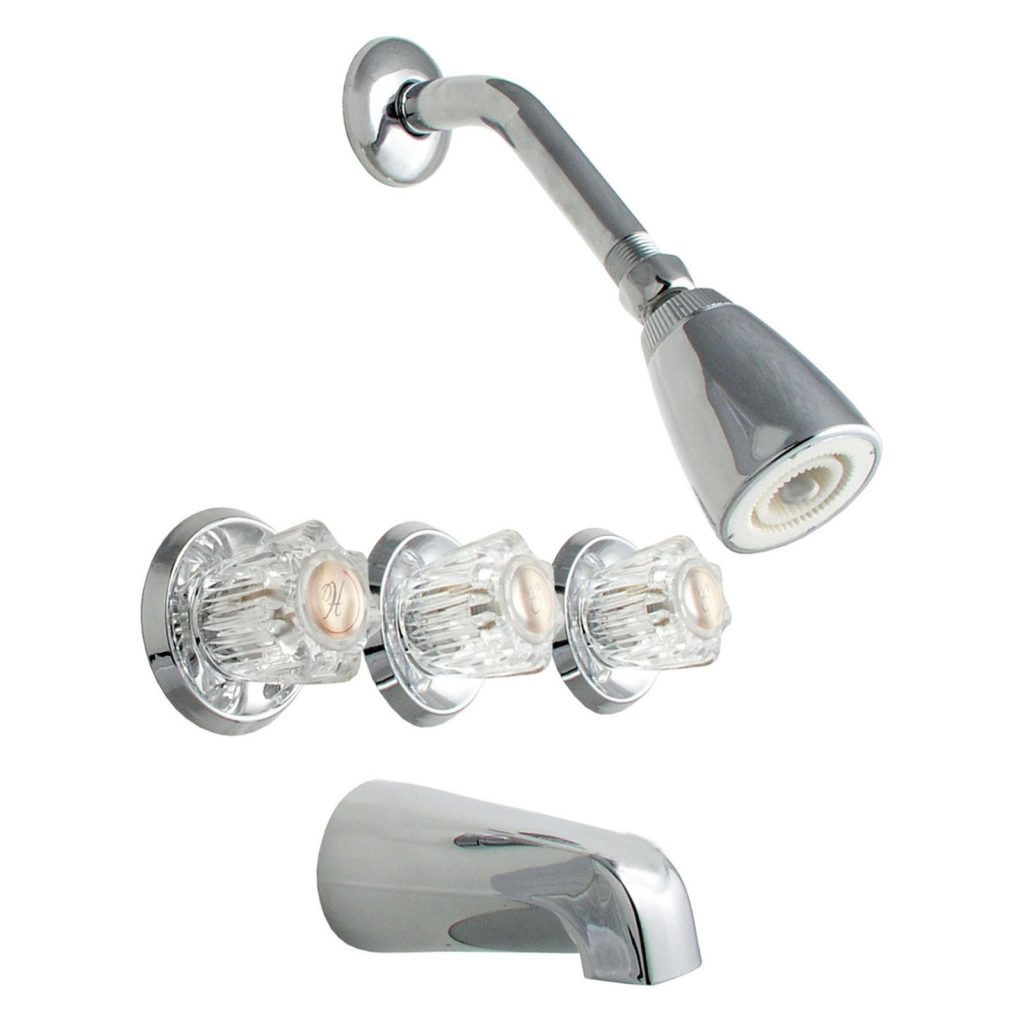 Three-hole mixer tap – Separate hot and cold handles blend water through a central spout.
Three-hole mixer tap – Separate hot and cold handles blend water through a central spout.
Trap Seal – The height of water in a toilet bowl “at rest, it provides a water seal which prevents sewer gases from entering the home. Trap seal is measured from the top of the dam, down to the inlet of the trapway. Also referred to as deep seal.
Trapway – In a toilet, the channel that connects the bowl to the waste outlet. The trapway is where siphonic action takes place. The trapway is measured in terms of the largest diameter ball which can pass through it. Also referred to as passageway.
Trim – Any non-vitreous china toilet components, except the seat. Examples include ballcock, bolt caps, and trip lever.
Trip Lever – Handle which is rotated to initiate the toilet flush cycle. Kohler factory-installed trip levers have a polished chrome finish; optional trim kits offer trip levers in other finishes. Toilets equipped with Peacekeeper seat-actuated flush do not have a trip lever.
Two-handle – Two-handle faucets feature separate handles to control hot and cold water mix.
Two-Piece Toilet – A toilet with a separate tank and bowl. Also referred to as close-coupled.
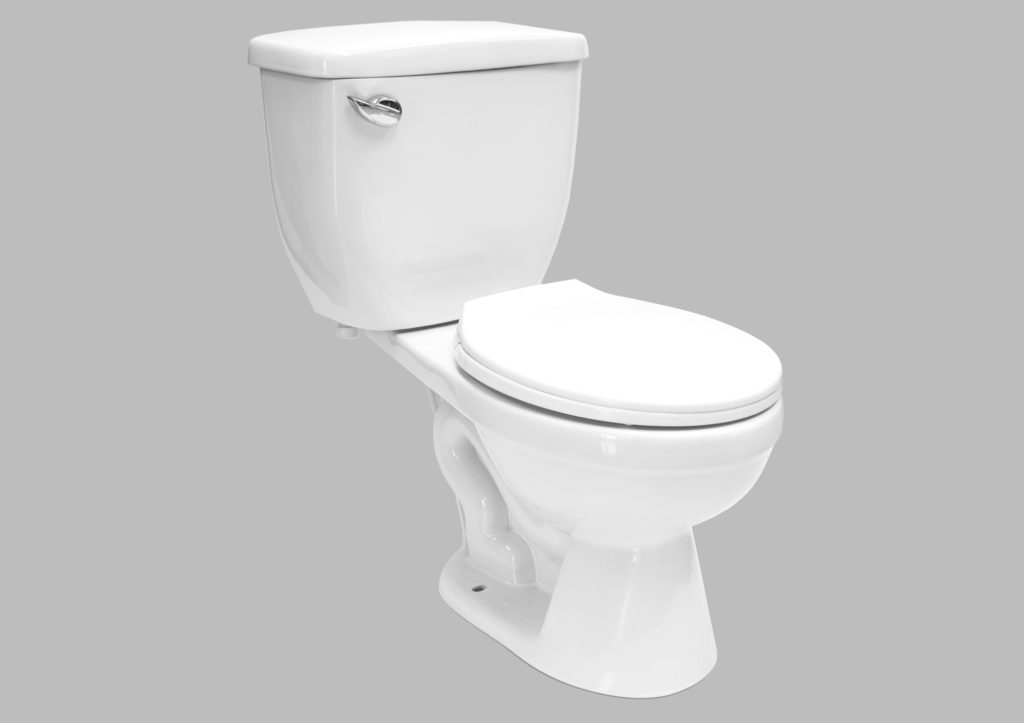
“ULF” – “Ultra Low Flush”, a widely used descriptor for 1.6 gpf or 6 litres per flush(or less) low consumption toilets.
Undercounter – Undercounter sinks mount beneath the counter for use with solid surface, granite, stone or blended stone countertops.
Urinal – A plumbing fixture which receives only liquid body waste (Urine) and conveys the waste through a trap seal into a gravity drainage system.
Vanity / countertop faucet – A fitted basin which is completely surrounded by a worktop.
Vanity top – Combines both basin and worktop in a single ceramic piece. Can be either wall hung or may sit on bathroom furniture.
Vessel – Vessel faucets can be fitted to sit on a countertop or partly inset into it. They may also be wall mounted using a special bracket.
Vitreous china – As applied to plumbing fixtures, compounded of ceramic materials fired at high temperature to form a nonporous body with exposed surfaces coated with ceramic glaze fused to the body.
Wall hung – The toilet cistern is concealed behind a wall or inside bathroom furniture and the pan protrudes from the wall, above the floor. Basins and bidets can also be wall hung. The height can be fixed to suit the comfort of the users.

Wall mount tap – Used with faucets or baths that have no tapholes. Handles and spout protrude from the wall above the basin or bath and the pipework is hidden behind the wall. Be careful to select a spout that reaches over the basin or bath.
Washdown – Water Closet A water closet having a siphon trapway at the front of the bowl, and integral flushing rim. Minimum dimensions are 8″ x 7″ water spot, and 1 1/2″ ball pass.
Water Closet – A plumbing fixture having a water-containing receptor which receives liquid and solid body waste and, upon actuation (flushing), conveys the waste through a trapway into a gravity drainage system.
Water Spot – The water surface in the toilet bowl once the flush is completed. This is established by the height of the integral trapway dam. Usually expressed in inches of width by length. Also referred to as water surface.
Water-Saving Toilet – A classification of toilet which uses no more than 13 litres and no less than 6 litres per flush.
For a concise Vastu guide and evaluation of your Bathroom, please refer to the post on my blog: House Construction in India
Related Topics:
- DESIGN OF A BATHROOM
- BATHROOM FIXTURES
- AN ARCHITECT’S IDEAS FOR A BATHROOM
- VASTU GUIDELINES FOR BATHROOMS
If you found this post useful, I would really love it if you pin it or share it. All it takes is a simple click on the “pin it” “like,” “share,” “tweet,” or Google+ buttons below the post.


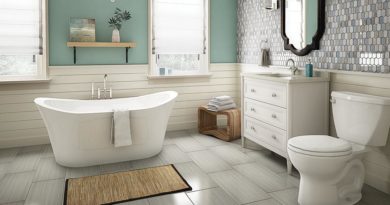
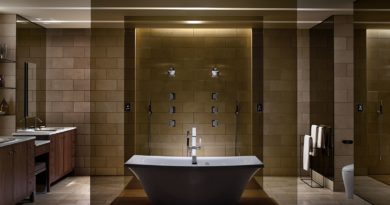
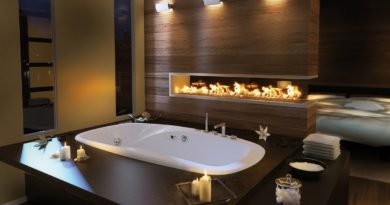
Nice post.
I learned a lot of information from this post. Thanks for the effort you took to expand upon this topic so thoroughly. I look forward to future post.